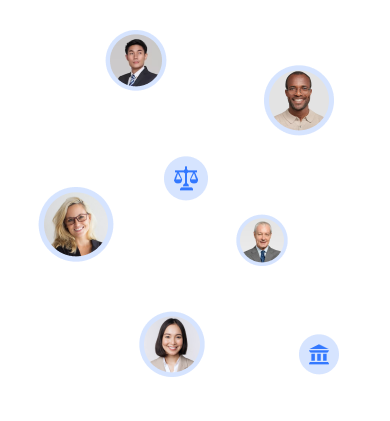Negligence is a crucial concept in Florida’s legal system, encompassing various elements that must be proven for a successful claim. Each element from duty of care to damages plays a significant role in determining liability.
This article explores different types of negligence, including ordinary, gross, comparative, and contributory negligence. It discusses the statute of limitations for negligence cases in Florida and available defenses against negligence claims.
Understanding these laws is essential for anyone navigating the complexities of negligence law in the state.
Key Takeaways:

- Negligence is the failure to exercise reasonable care that results in harm to another person or their property.
- The elements of negligence in Florida include duty of care, breach of duty, causation, and damages.
- Different types of negligence in Florida include ordinary negligence, gross negligence, comparative negligence, and contributory negligence.
What is Negligence?
Negligence is defined under Florida law as a failure to meet the standard of care that a reasonably prudent person would have exercised in the same circumstances. It serves as the basis for numerous personal injury and tort law claims, attributing liability to individuals or entities for careless actions that cause harm.
In personal injury cases, negligence plays a critical role in determining fault and responsibility. For example, a driver who causes an accident by running a red light due to negligence may be held accountable for the injuries and damages sustained by the other party. Likewise, a property owner who neglects to upkeep a safe environment, leading to a slip and fall incident, could be deemed negligent under the law.
The scope of liability for negligence encompasses businesses, professionals, manufacturers, and other entities, underscoring the importance of adhering to care standards to prevent harm.
What are the Elements of Negligence?
The elements of negligence are fundamental components that need to be established in negligence cases. These elements include:
- Duty of care
- Breach of duty
- Causation
- Damages
1. Duty of Care
The duty of care encompasses a legal obligation that necessitates individuals to exercise reasonable care in order to prevent causing harm to others in personal injury cases. This duty is determined by assessing the relationship between the parties involved, the foreseeability of harm, and the standard of care expected in a specific situation.
In legal contexts, the duty of care functions as a basis for determining liability in negligence claims. For example, in a medical malpractice scenario, a healthcare provider’s duty of care toward a patient entails providing competent medical treatment. Failure to fulfill this obligation can lead to negligence claims if it results in harm or injury to the patient due to a breach of the standard of care.
2. Breach of Duty
A breach of duty happens when the defendant fails to fulfill their legal obligation, behaving in a manner that a reasonably prudent person would not, thus contributing to negligent actions.
When determining if a breach of duty has occurred, courts take into account the standard of care anticipated in specific situations. For example, in medical malpractice cases, the defendant’s actions are compared to those of a skilled healthcare provider in the same field.
Common instances of breaches include a driver running a red light and causing an accident or a doctor prescribing the wrong medication. Proving a breach in court involves showing that the defendant’s behavior fell below the expected standard, resulting in harm or injury.
The consequences of a breach of duty in negligence cases could lead to the defendant being held responsible for damages caused by their negligent behavior.
3. Causation
Causation in negligence cases involves establishing a direct link between the defendant’s breach of duty and the plaintiff’s injuries to prove causation.
Courts commonly assess causation using the concepts of cause in fact, or ‘but-for‘ causation, and proximate causation. ‘But-for‘ causation requires demonstrating that the harm would not have happened if it were not for the defendant’s actions. Proximate causation, on the other hand, examines whether the harm was a foreseeable result of the defendant’s actions.
For example, in a car accident where a driver runs a red light and hits another car, the ‘but-for’ causation would be the act of running the red light leading directly to the collision, while proximate causation would consider if the collision was a foreseeable consequence of running a red light. These concepts are crucial in determining liability in negligence claims.
4. Damages

In negligence cases, damages are sought by injury victims as financial compensation to cover losses like medical expenses, lost wages, and pain and suffering.
Compensatory damages aim to reimburse the injured party for actual losses suffered, such as medical bills and lost income resulting from the injury.
In contrast, punitive damages serve to punish the wrongdoer for their misconduct and go beyond mere compensation.
Calculating damages involves evaluating both economic and non-economic factors, including the extent of the injury, its impact on the individual’s life, and any future medical expenses or lost earning potential.
Several factors, such as the level of negligence of the defendant and the legal jurisdiction, can impact the final amount awarded in a negligence case.
What are the Different Types of Negligence?
Understanding the different types of negligence is important as it determines the legal framework and standards applied in negligence lawsuits. These types include ordinary negligence, gross negligence, comparative negligence, and contributory negligence.
1. Ordinary Negligence
Ordinary negligence is defined as a failure to exercise reasonable care, leading to harm or injury, and it is the most common type of negligence claims. When evaluating ordinary negligence, the court typically considers whether a reasonable person would have acted differently in the specific situation to prevent harm.
For instance, in the context of a car accident, if a driver rear-ends another vehicle because of texting while driving, they could be considered negligent because a reasonable person would comprehend the dangers of distracted driving.
Establishing ordinary negligence in a legal setting involves proving that the defendant had a duty of care towards the plaintiff, breached that duty through their actions or inactions, and that this breach directly caused the plaintiff’s injuries.
2. Gross Negligence
Gross negligence is defined as a serious lack of care or reckless disregard for the safety of others, exceeding ordinary negligence and often resulting in more severe legal consequences for the plaintiff. It is characterized by behavior that goes beyond mere carelessness, demonstrating a conscious indifference or blatant disregard for the rights and well-being of others.
Unlike ordinary negligence, which can be unintentional or simply a failure to exercise reasonable care, gross negligence implies deliberate or knowing misconduct that poses a significant risk of harm. In legal terms, establishing gross negligence requires a higher standard of proof in comparison to ordinary negligence, as it entails demonstrating a heightened level of culpability on the part of the defendant.
3. Comparative Negligence
Comparative negligence is a legal doctrine utilized to distribute damages according to the degree of fault assigned to each party in negligence cases. This principle recognizes that in many instances, both parties involved in an accident may have played a role in causing the incident.
Under this doctrine, the compensation awarded to a plaintiff is decreased proportionally to the percentage of their own fault.
There are two common forms of comparative negligence: pure comparative negligence and modified comparative negligence.
In pure comparative negligence, the plaintiff can still receive damages even if they were primarily responsible, but the amount will be reduced based on their level of fault.
Conversely, under modified comparative negligence, the plaintiff is unable to recover damages if they are deemed to be equally or more at fault than the defendant.
4. Contributory Negligence
Contributory negligence serves as a defense in negligence claims, where the plaintiff’s own negligent actions are taken into account and could prevent them from recovering any damages.
This concept assigns some level of responsibility to the plaintiff for their injuries or losses, even if the defendant was also negligent. In cases of contributory negligence, if it can be established that the plaintiff’s actions contributed to the incident, they might be completely barred from receiving compensation.
This is distinct from comparative negligence, where fault is assessed for each party, and damages are divided accordingly. Contributory negligence is predominantly utilized in a select few states in the United States, including Alabama, Maryland, North Carolina, and the District of Columbia.
What is the Statute of Limitations for Negligence Cases in Florida?

In Florida, the statute of limitations for negligence cases, as governed by Florida Statutes, typically requires personal injury claims to be filed within four years from the date of the incident.
This time limit is crucial as it serves to ensure that lawsuits are brought forth in a timely manner, preserving the integrity of evidence and testimony. There are exceptions to this rule that plaintiffs should be aware of.
For instance, if the injury was not immediately evident, the statute of limitations may begin when it was discovered or should have been discovered. In cases involving minors, the statute of limitations may be tolled until they reach the age of majority. To avoid missing these deadlines, plaintiffs are advised to consult with legal professionals promptly and diligently gather all necessary documentation.
What are the Defenses Against Negligence Claims in Florida?
In legal cases in Florida, defendants can utilize various defenses against negligence claims. These defenses include assumption of risk, contributory negligence, comparative negligence, and the statute of limitations.
1. Assumption of Risk
The assumption of risk is a legal defense used in negligence claims where the plaintiff is seen as having willingly accepted the known risks linked to an activity.
This doctrine is typically relevant when the plaintiff partakes in an activity fully aware of the associated risks and, in doing so, waives the right to hold the defendant accountable for any resulting injuries or damages.
To establish assumption of risk in court, it must be proven that the plaintiff had actual knowledge of the risks, comprehended the nature and extent of those risks, and made a voluntary decision to proceed despite such awareness. For example, if someone engages in a high-impact sport like skydiving, they are considered to have acknowledged and accepted the inherent dangers involved.
2. Contributory Negligence
Contributory negligence as a legal defense argues that the plaintiff’s own negligence contributed to their injuries, which can completely bar recovery in some jurisdictions. This defense places a significant burden on the plaintiff, as any degree of negligence on their part, no matter how small, could potentially absolve the defendant of any liability.
For example, in states like Alabama, Maryland, North Carolina, and Virginia, the contributory negligence rule is still in effect, making it vital for plaintiffs to prove their own actions did not play a role in the incident. In situations where both parties are found to be at fault, the plaintiff may be unable to recover any damages, which can be a harsh reality in the legal realm.
3. Comparative Negligence
Comparative negligence is a legal defense that decreases the plaintiff’s compensation based on their percentage of fault in causing the accident or injury. This concept is important in cases where both parties bear some level of responsibility for the incident. The determination of fault percentages involves a comprehensive assessment of the actions and behaviors of all individuals involved.
For example, if a pedestrian was jaywalking and was struck by a speeding car, the court might assign 20% of the fault to the pedestrian and 80% to the driver. Consequently, the plaintiff’s compensation is adjusted accordingly, with the total amount reduced by their percentage of fault.
Understanding the difference between pure and modified comparative negligence is crucial in this context. In a pure comparative negligence system, the plaintiff can still receive damages regardless of their degree of fault, although the amount is decreased by their percentage of responsibility.
Conversely, in a modified comparative negligence system, the plaintiff may only recover damages if their fault does not surpass a certain threshold, commonly set at 50%. These distinctions significantly influence the outcomes of personal injury cases and determine the final compensation awarded to the plaintiff.
4. Statute of Limitations
The statute of limitations in Florida imposes a time restriction on the duration within which plaintiffs can file negligence claims, typically four years from the incident date. This legal principle promotes the prompt resolution of disputes and deters the submission of outdated claims that may lack reliable evidence due to the passage of time.
Defendants can utilize the statute of limitations as a defense to assert that the plaintiff’s claim is time-barred, potentially leading to the dismissal of the case. Certain exceptions exist to this rule, such as cases involving minors or individuals with mental incapacities, where the statute of limitations may be extended or tolled depending on the circumstances.
Frequently Asked Questions

What is negligence under Florida law?
Negligence under Florida law is the failure to exercise reasonable care, resulting in harm or injury to another person or their property. It is a legal concept used to determine fault and liability in personal injury cases.
What are the elements of negligence in Florida?
The four elements of negligence in Florida are duty, breach of duty, causation, and damages. A person must owe a duty of care to another, fail to meet that duty, and cause harm or injury to the other person.
Can a person be held responsible for negligence if they did not intend to cause harm?
Yes, in Florida, a person can still be held responsible for negligence even if they did not intend to cause harm. Negligence is based on the failure to exercise reasonable care, regardless of intent.
What is the statute of limitations for negligence cases in Florida?
The statute of limitations for negligence cases in Florida is four years from the date of the incident. This means that a person must file a lawsuit within four years of the negligent act or they may lose their right to seek compensation.
Can a business be held liable for the negligence of their employees?
Yes, under the principle of vicarious liability, a business can be held liable for the negligence of their employees if the employee was acting within the scope of their employment at the time of the incident. This is known as respondeat superior in Florida law.
What is comparative negligence and how does it apply in Florida?
Comparative negligence is a legal concept used in Florida to determine the percentage of fault between the parties involved in a negligence case. The amount of compensation a person can receive for their damages is reduced by their percentage of fault. For example, if they are found to be 20% at fault, their compensation will be reduced by 20%.























Rate this article:
Average rating 0 / 5. Vote count: 0
No votes so far! Be the first to rate this post.
No Comments yet!